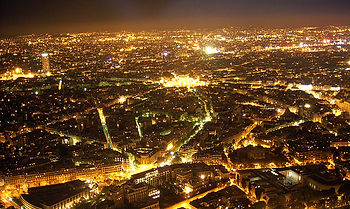
Light pollution is an increasing environmental issue. Artificial lights produce light pollution. There are four types of light pollution; sky glow, light trespass, glare, and over-illumination. Sky glow is the bright halo that appears over urban areas at night. It is an outcome of light being scattered by water droplets or particles in the air. Light trespass occurs when unwanted artificial light intrudes into an area other than the intended lit area. Glare is created by light that shines horizontally, and finally, over-illumination is the use of artificial light that is not required for certain activities, such as keeping the lights on all night in an empty office building (Chepesiuk, 2008). All forms of light pollution are harmful to the environment.
Negative impacts:
Light pollution has a negative impact on many species including human beings. Light pollution can disrupt reproduction, feeding, sleeping and even migration. Many species use the naturally occurring darkness of night for sleeping, reproduction, and migration and they can become confused when their natural circadian rhythm is disrupted by artificial lighting. Research on insects, turtles, birds, and other wildlife species shows that light pollution can alter behaviors and breeding cycles, and not only in urban area but also in rural areas.
There are also many studies that provide evidence that light pollution has harmful consequences to human health. Several studies over the last decade have shown that keeping our bodies exposed to artificial light at night increases cancer risk, especially for cancers that require hormones to grow (Spivey, 2010). Studies have also shown that there is an increased risk of breast cancer in women subject to light pollution.
In addition to being harmful to humans and species light pollution is also taking away the spledor of the night sky. About one-fifth of the worlds population, more than two-thirds of the United States population, and more than one half of the European population have already lost naked eye visibility of the Milky Way (Cinzaon et al., 2001). Light pollution has serious consequences, but luckily it’s effects are not permanent, and it’s reduction is absolutely possible!
